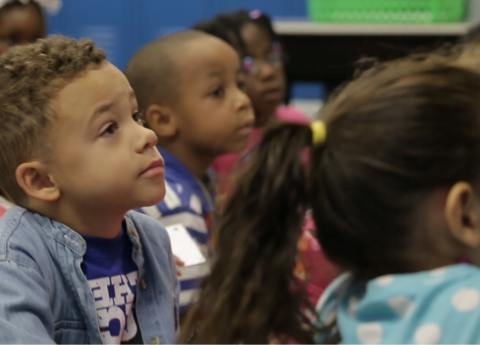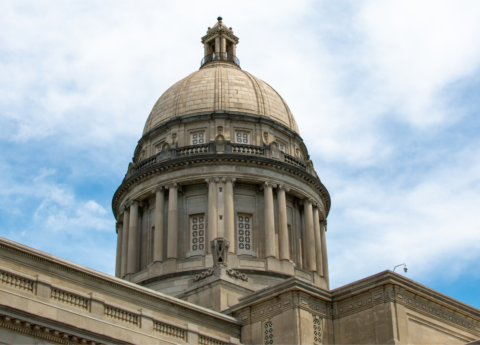A few days before my two elementary schoolers bounded up the steps of the bus for their first day back to school, the Consensus Forecasting Group (CFG) – the official Kentucky body charged with forecasting revenue estimates that form the basis of the next state budget – met for the first time this budget cycle.
The revenue picture that emerged from their meeting doesn’t bode well for the budget legislators will begin crafting in January – including for the state’s statutory responsibility to fully fund the buses my kids and others rode that day. Inadequate state revenue in recent years has caused the state’s contribution toward school districts’ busing costs to fall from meeting the 100% requirement in the early 2000s to just 66% in 2019.
Of course, districts still have to pick up children for school. Our bus driver was prompt as usual, greeting the kids with enthusiasm.
But as school boards, teachers and concerned parents know, when the state shirks its education funding responsibility, important things end up getting cut. My organization’s 2017 survey of superintendents showed that a decade’s worth of state budget cuts have forced many difficult decisions at the local level, including reductions in academic programs, support services, staff and instructional days.
School districts are also raising local taxes to make up for lost state resources. Those with limited tax bases struggle to keep up. As a result, the gap between school funding in wealthier versus poorer communities is climbing back towards levels we haven’t seen since before the Kentucky Education Reform Act (KERA) closed much of the equity gap. On this 30th anniversary of the state Supreme Court decision that led to KERA, we’re investing $2,680 less per pupil in the poorest 20% of districts than we are in the wealthiest 20%.
The CFG meeting made it clear, once again, why Kentucky struggles to equitably and adequately fund our schools – not to mention why we are failing to equip social workers with the resources they need to protect Kentucky kids, support public health departments’ vital role in keeping us healthy, and make so many other important investments in our communities.
The problem is our General Assembly’s bad habit of choosing expensive new tax breaks for special interests over investments in thriving communities.
For example, the Office of the State Budget Director presented the CFG with information about the cumulative impact of the tax changes enacted by the last two General Assemblies. In 2018, they passed a tax bill that cut taxes for the wealthiest 5% of Kentuckians and shifted them over to everyone else in a way that would provide a short-term revenue bump, but lead to long-term erosion. In 2019, they followed up with two bills comprised of significant tax giveaways. The net positive new revenue from the 2018 and 2019 tax changes combined is $192.3 million in 2019 but is projected to plummet to only $17.8 million by 2024.
In other words, the 2019 General Assembly spent almost all of the revenue it generated in 2018 – through changes that cost low-income families the most – to provide even more tax breaks for special interests. The most expensive new tax break was a big, unnecessary giveaway for banks, including large banks headquartered out of state. That $56 million tax break is more than double what the state will spend this year on “Extended School Services” like after school and summer school, which have been cut nearly 40% in inflation-adjusted terms since 2008.
As a result, the CFG expects revenue growth for the next budget to be tepid, meaning the General Assembly will struggle again to maintain current services and the 21st round of budget cuts since 2008 will be on the table.
If we want to see the kind of economic progress that comes from a highly skilled workforce, a good quality of life, clean water, modern infrastructure and high-speed broadband, we’re going to have to rethink our priorities.
This column ran in the State Journal on August 27, 2019.



